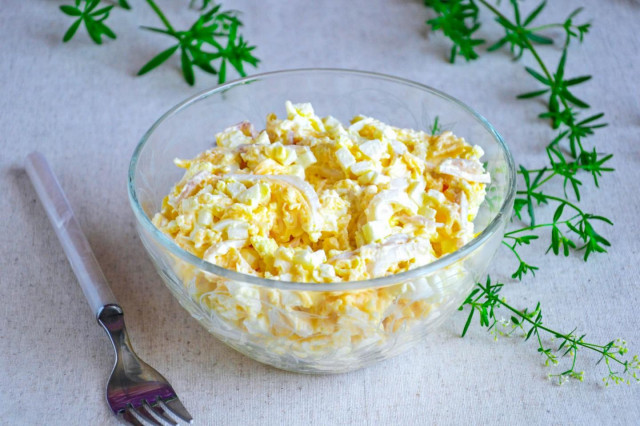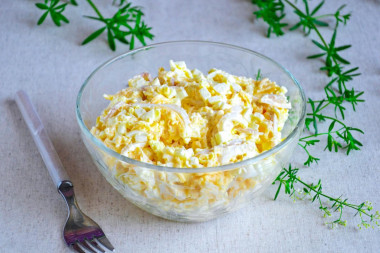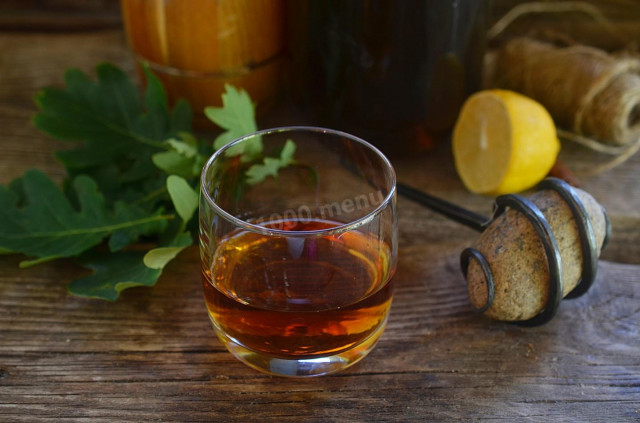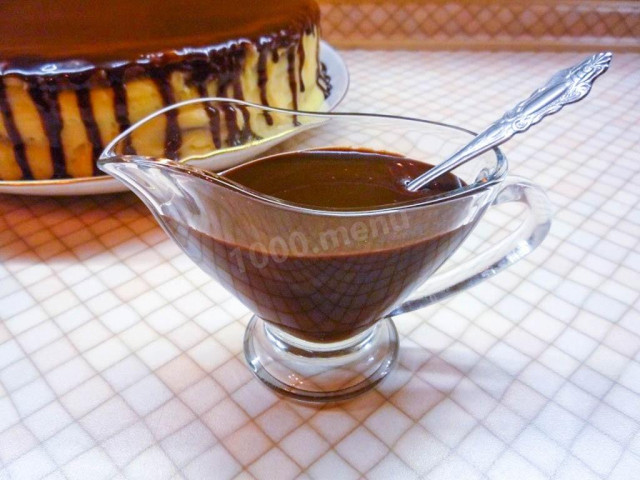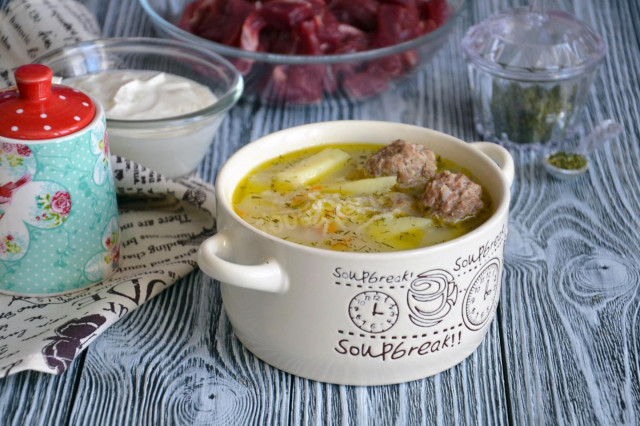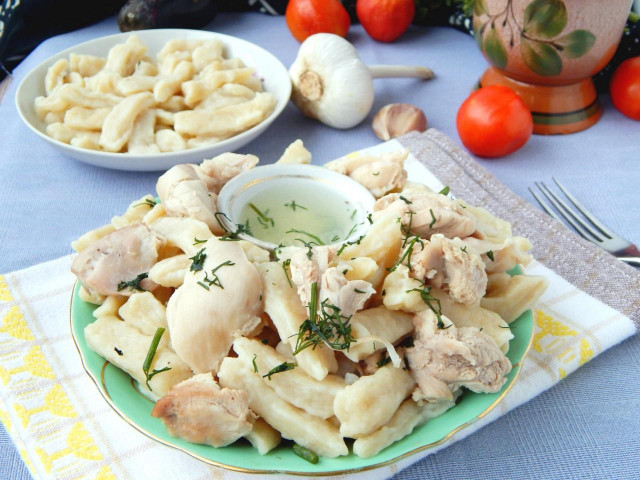Composition / ingredients
Step-by-step cooking
Step 1:
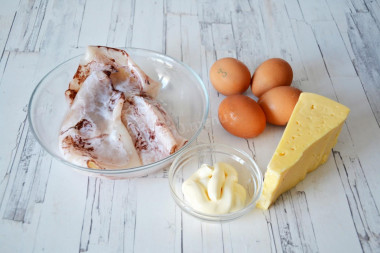
How to make a salad with squid and cheese? Prepare the ingredients. Squid can be used both raw and ready-made, canned. Cheese can be any: hard, semi-hard and even melted, the main thing is that it is delicious.
Step 2:
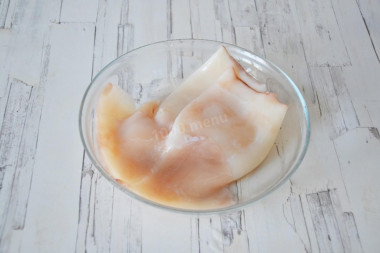
Defrost the squid, peel off the film and gut it, removing the insides and chitinous plate. Rinse them well under running water.
Step 3:
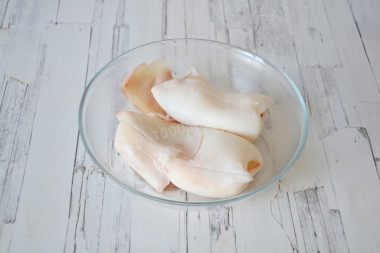
Boil the squid. How to boil squid? Throw the peeled squid into salted boiling water. Cook them for 1-2 minutes. Do not cook longer!!! Otherwise, the squid will become hard as rubber and completely tasteless.
Step 4:
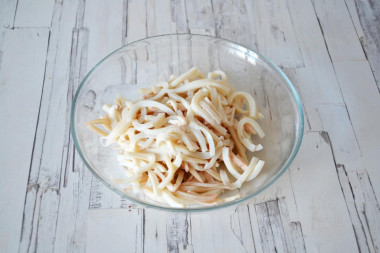
Remove the finished squid from boiling water and cool. Cut them into strips.
Step 5:
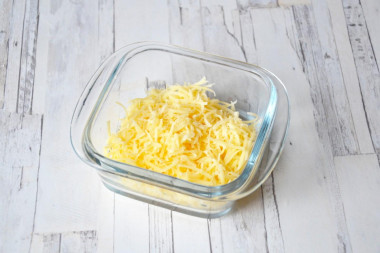
Grate the cheese on a coarse or medium grater.
Step 6:
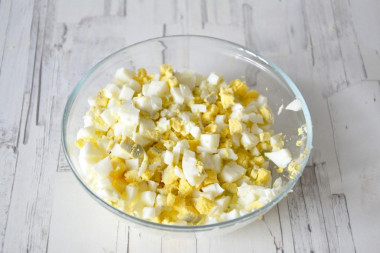
Boil the eggs. How to cook hard-boiled eggs? Put them in cold water, put them to cook on a small fire. Boil the eggs for 9 minutes after boiling, then pour cold water and cool. From a sharp temperature drop, the shell will be better cleaned. Cool and peel them from the shell. Cut into small cubes.
Step 7:
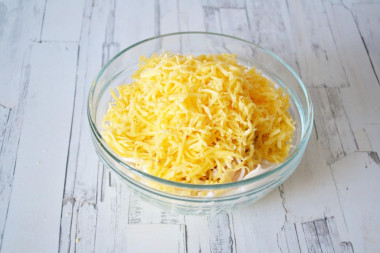
Combine squid, eggs and cheese in a salad bowl.
Step 8:
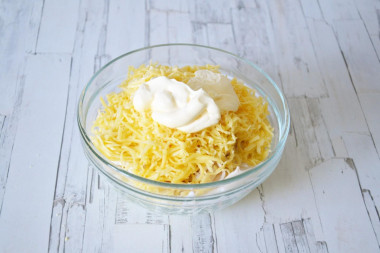
Season everything with mayonnaise.
Step 9:
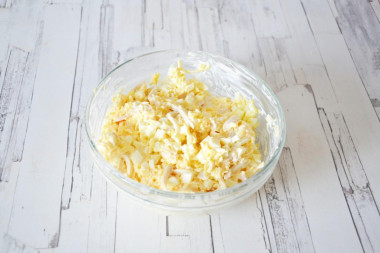
Mix everything well. Put the salad in the refrigerator for 20-30 minutes before serving. Enjoy your meal!
The content of iron and potassium in squid supports the normal functioning of the heart. In addition, white squid meat does not contain cholesterol at all. Iodine is extremely necessary for a person to maintain a healthy state of the thyroid gland and the endocrine system as a whole. Of particular benefit is the content of selenium in squid: it helps to remove heavy metal salts from the body. The undoubted benefit of squid is that, thanks to the components in its composition, it is possible to effectively influence the level of cholesterol in the blood (if it is exceeded). And this is a good prevention against heart and blood vessel diseases. Many useful substances in the composition of squid meat make the vessels more elastic, and this increases their strength and ability to narrow. The benefits of squid also consist in the fact that, thanks to the proteins in the composition of shrimp and squid, their use well supports and improves the development of muscle tissue. These properties and the high caloric content of squid make this meat an excellent product for those people who aim to build muscle. The nutritional value, along with the high caloric content of squid, has an excellent effect on the state of the digestive system. Shrimp and squid are perfectly absorbed by the body without creating heaviness in the stomach. Doctors consider their ability to stimulate mental activity and improve memory to be an essential benefit of squid.
It is better to prepare mayonnaise yourself. It will be tastier and healthier. See here interesting
recipes for homemade mayonnaise.
Also, as a dressing, you can use not only mayonnaise, but also sour cream or natural yogurt. They can be taken separately or mixed with mayonnaise in any proportion to your taste - this will reduce the calorie content of the dish.
Caloric content of the products possible in the composition of the dish
- Chicken egg - 157 kcal/100g
- Egg white - 45 kcal/100g
- Egg powder - 542 kcal/100g
- Egg yolk - 352 kcal/100g
- Ostrich egg - 118 kcal/100g
- Fried squid - 175 kcal/100g
- Boiled squid - 110 kcal/100g
- Squid fresh - 74 kcal/100g
- Dutch cheese - 352 kcal/100g
- Swiss cheese - 335 kcal/100g
- Russian cheese - 366 kcal/100g
- Kostroma cheese - 345 kcal/100g
- Yaroslavsky cheese - 361 kcal/100g
- Altai cheese 50% fat content - 356 kcal/100g
- Soviet cheese - 400 kcal/100g
- Cheese "steppe" - 362 kcal/100g
- Uglich cheese - 347 kcal/100g
- Poshekhonsky cheese - 350 kcal/100g
- Lambert cheese - 377 kcal/100g
- Appnzeller cheese with 50% fat content - 400 kcal/100g
- Chester cheese with 50% fat content - 363 kcal/100g
- Edamer cheese with 40% fat content - 340 kcal/100g
- Cheese with mushrooms of 50% fat content - 395 kcal/100g
- Emmental cheese with 45% fat content - 420 kcal/100g
- Gouda cheese with 45% fat content - 356 kcal/100g
- Aiadeus cheese - 364 kcal/100g
- Dom blanc cheese (semi-hard) - 360 kcal/100g
- Cheese "lo spalmino" - 61 kcal/100g
- Cheese "etorki" (sheep, hard) - 401 kcal/100g
- White cheese - 100 kcal/100g
- Fat yellow cheese - 260 kcal/100g
- Altai cheese - 355 kcal/100g
- Kaunas cheese - 355 kcal/100g
- Latvian cheese - 316 kcal/100g
- Limburger cheese - 327 kcal/100g
- Lithuanian cheese - 250 kcal/100g
- Lake cheese - 350 kcal/100g
- Gruyere cheese - 396 kcal/100g
- Salad mayonnaise of 50% fat content - 502 kcal/100g
- Light mayonnaise - 260 kcal/100g
- Provencal Mayonnaise - 624 kcal/100g
- Provencal mayonnaise - 627 kcal/100g
- Table mayonnaise - 627 kcal/100g
- Salt - 0 kcal/100g

